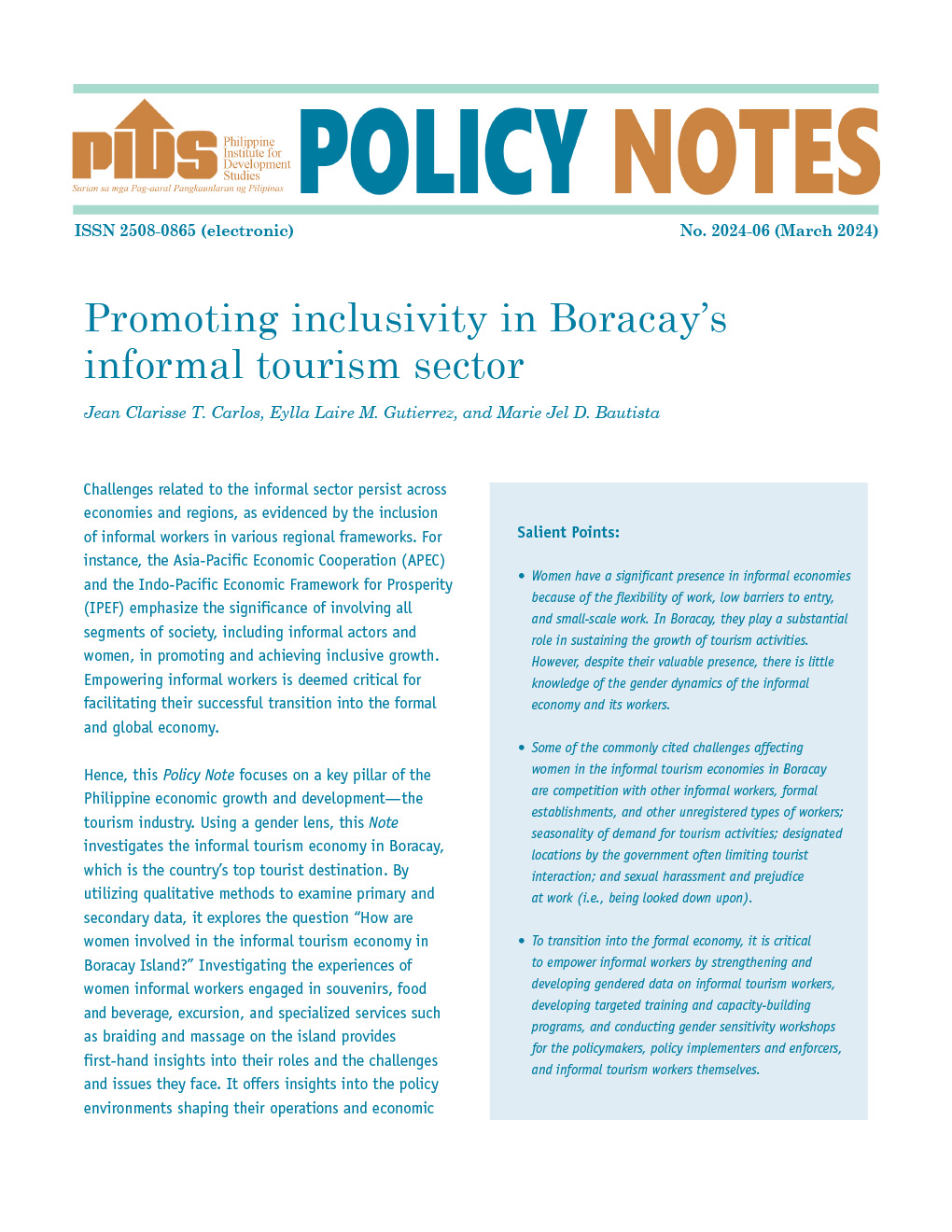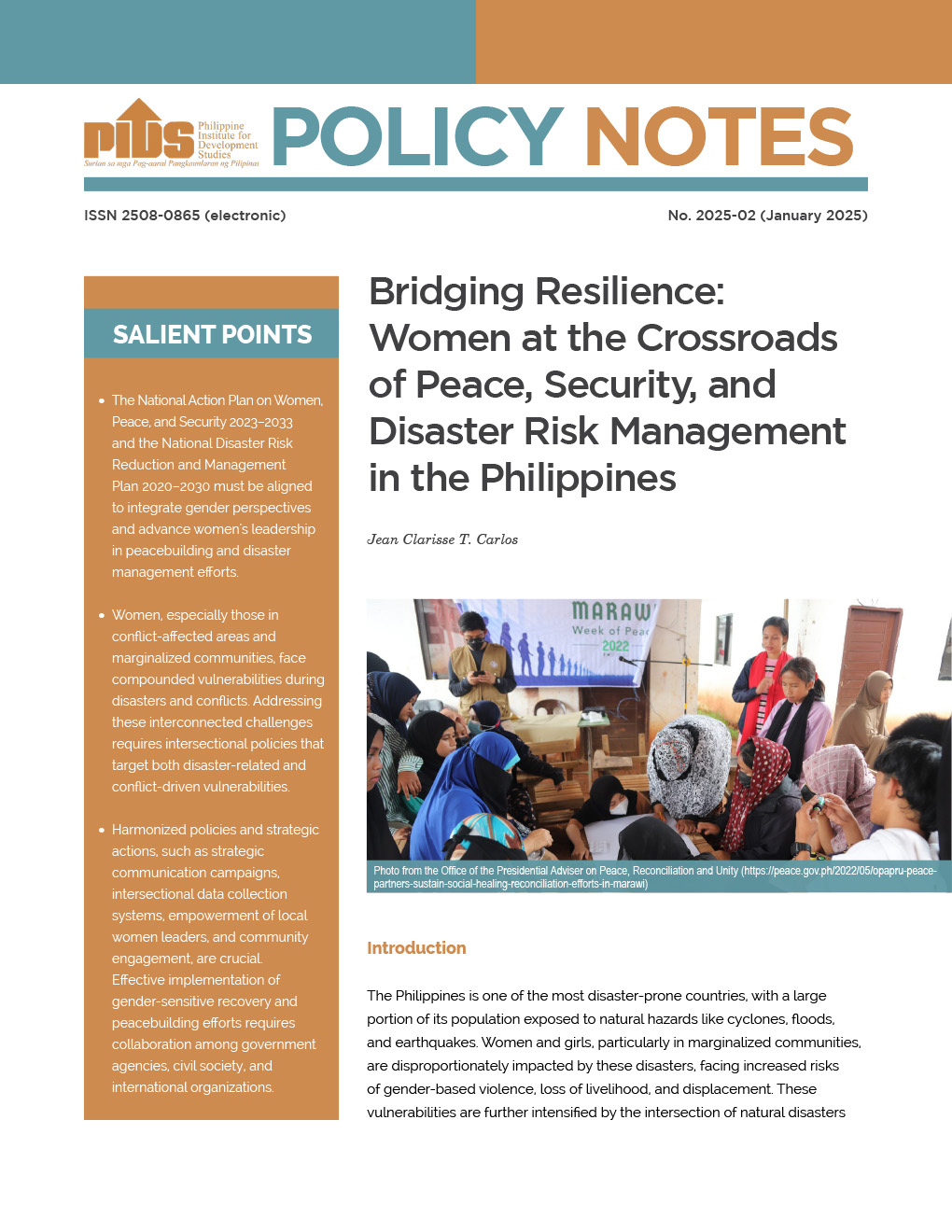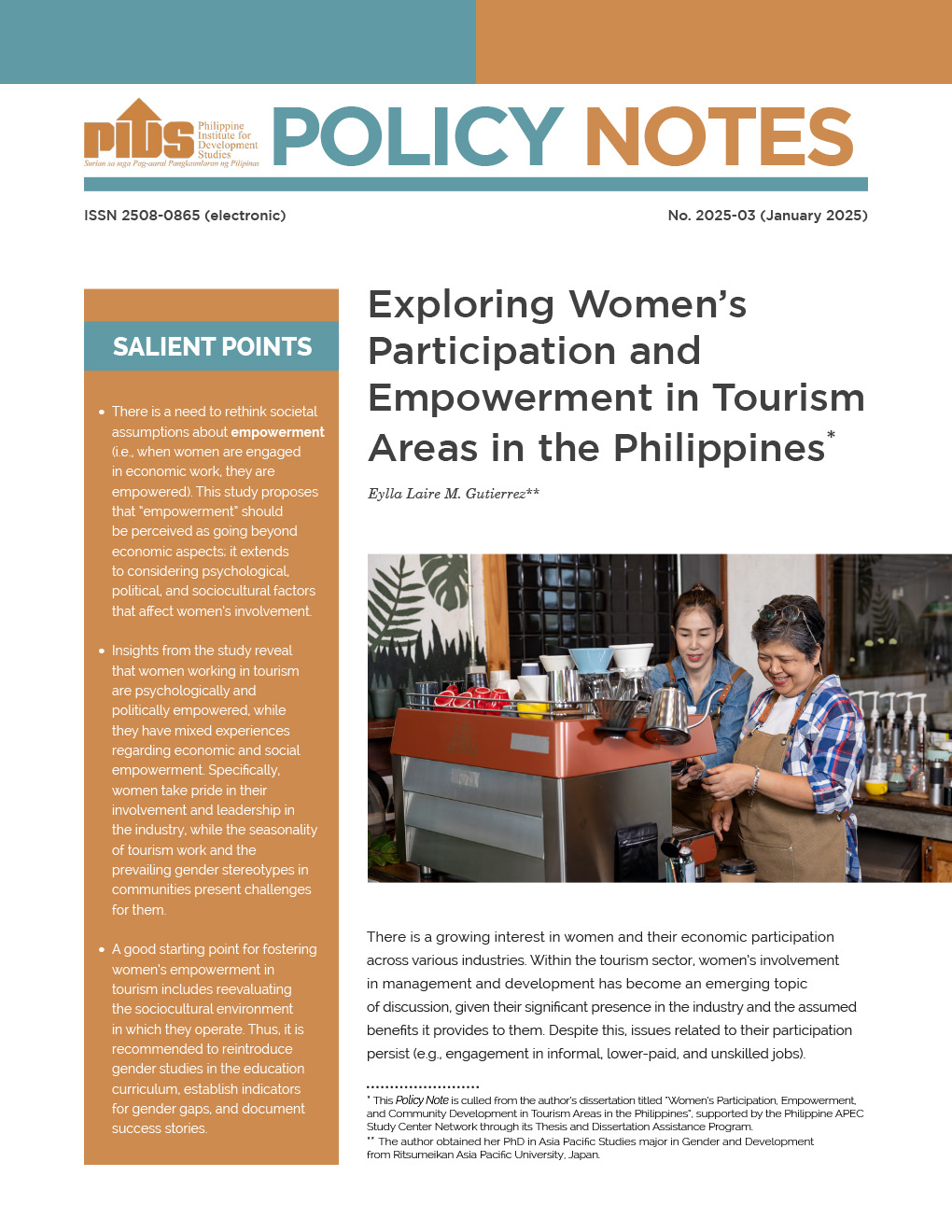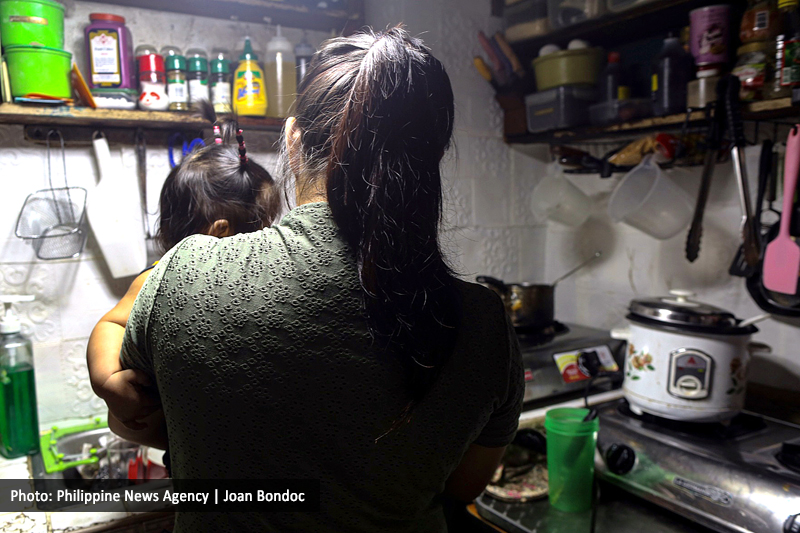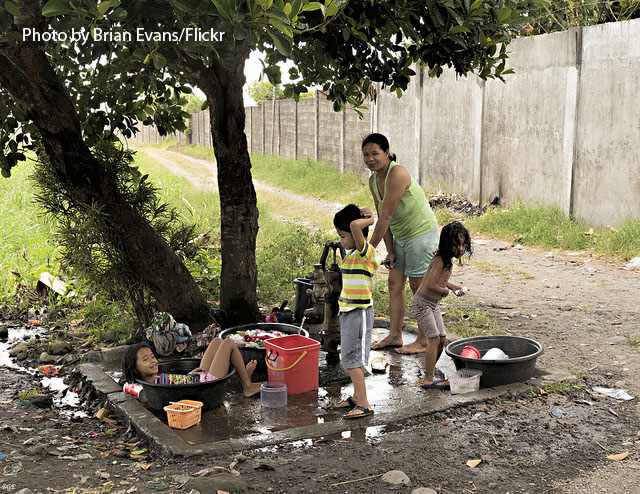
The value of women’s unpaid work in the Philippines is worth trillions of pesos, according to a senior research fellow of the country’s premier think tank Philippine Institute for Development Studies (PIDS).
In a recent public seminar on gender and development organized by PIDS, Research Fellow Michael Abrigo said the monetary value of women’s time spent on childcare, eldercare, and house chores like cleaning, cooking, and washing makes up 20 percent of the country’s gross domestic product (GDP).
“We want to bring home the message that there’s value on housework, na hindi ibig sabihin nito na porke’t nasa bahay sila ay walang value yung oras nila. We want to convert these time units into monetary units,” Abrigo explained.
Abrigo said he and his coauthor used the National Transfer Account (NTA) and the National Time Transfer Account (NTTA) to measure the worth of unpaid work. The NTA captures the productive activities within the production boundaries of the GDP while the NTTA estimates the time spent on unpaid work.
Citing data in 2015, he said paid work of both sexes was valued at PHP9.3 trillion pesos while their unpaid work totaled PHP2.5 trillion pesos. Women’s contributions on these were at 40 percent and 76 percent, respectively.
While Filipino women are encouraged to join the labor force, there are factors to be considered, Abrigo noted. “If we want mothers to work outside the home, dapat may kapalit siya na magtatrabaho sa loob ng bahay. Halimbawa, may mga anak at working siya, sino ang mag-aalaga sa mga bata? Pwedeng si tatay o kumuha ng katulong pero kapag kumuha tayo ng kasambahay, meron din siyang pamilyang iiwanan, at kapag nangyari ito, sino naman ang mag-aalaga sa pamilya niya? So, this creates a vicious cycle,” he said.
Moreover, Abrigo mentioned that based on the regression analyses done by his team, mothers who spent more time working outside their homes are more likely to have children who are not attending school, or are lagging behind their peers. Other studies also show that families of working mothers who spend less time at home tend to eat more outside, or are less healthier.
According to Abrigo, these are some of the reasons that hold back women from joining the labor force. “In the Philippines, women are better educated than men. But if you look at the labor force distribution on paid work, women only comprised less than 50 percent of the workforce,” he explained. A way to resolve this issue, he proposed, is to encourage men to help their spouses do household chores.
“Para masagot natin yung tanong kung papaano natin maeengganyo ang mga babae na magtrabaho sa labas ng bahay, dapat masagot muna natin ang tanong kung paano makakatulong ang mga lalaki sa gawaing bahay. This way, mabibigyan natin ng oras ang babae para naman makatulong sa income ng pamilya,” Abrigo posited.
As of 2015, only 2 percent of men from single family households are at home doing the chores of mothers and their spouses.
In terms of time spent at work, Abrigo noted some movements toward gender parity in the Philippines over the last 25 years. “So yung mga lalaki, from a peak of about 40 hours per week, pababa ang trend niya. On average, bumaba siya ng 5 hours per week sa mga lalaki. Samantalang sa mge babae naman, especially those beyond reproductive ages, tumaas naman yung kanilang number of hours worked per week by 5 hours,” he explained.
To entice women to spend more time on paid market activities, Abrigo urged the government to look for ways to improve their labor participation like the implementation of flexible working arrangements, telecommuting, and extended maternity leave. ###
In a recent public seminar on gender and development organized by PIDS, Research Fellow Michael Abrigo said the monetary value of women’s time spent on childcare, eldercare, and house chores like cleaning, cooking, and washing makes up 20 percent of the country’s gross domestic product (GDP).
“We want to bring home the message that there’s value on housework, na hindi ibig sabihin nito na porke’t nasa bahay sila ay walang value yung oras nila. We want to convert these time units into monetary units,” Abrigo explained.
Abrigo said he and his coauthor used the National Transfer Account (NTA) and the National Time Transfer Account (NTTA) to measure the worth of unpaid work. The NTA captures the productive activities within the production boundaries of the GDP while the NTTA estimates the time spent on unpaid work.
Citing data in 2015, he said paid work of both sexes was valued at PHP9.3 trillion pesos while their unpaid work totaled PHP2.5 trillion pesos. Women’s contributions on these were at 40 percent and 76 percent, respectively.
While Filipino women are encouraged to join the labor force, there are factors to be considered, Abrigo noted. “If we want mothers to work outside the home, dapat may kapalit siya na magtatrabaho sa loob ng bahay. Halimbawa, may mga anak at working siya, sino ang mag-aalaga sa mga bata? Pwedeng si tatay o kumuha ng katulong pero kapag kumuha tayo ng kasambahay, meron din siyang pamilyang iiwanan, at kapag nangyari ito, sino naman ang mag-aalaga sa pamilya niya? So, this creates a vicious cycle,” he said.
Moreover, Abrigo mentioned that based on the regression analyses done by his team, mothers who spent more time working outside their homes are more likely to have children who are not attending school, or are lagging behind their peers. Other studies also show that families of working mothers who spend less time at home tend to eat more outside, or are less healthier.
According to Abrigo, these are some of the reasons that hold back women from joining the labor force. “In the Philippines, women are better educated than men. But if you look at the labor force distribution on paid work, women only comprised less than 50 percent of the workforce,” he explained. A way to resolve this issue, he proposed, is to encourage men to help their spouses do household chores.
“Para masagot natin yung tanong kung papaano natin maeengganyo ang mga babae na magtrabaho sa labas ng bahay, dapat masagot muna natin ang tanong kung paano makakatulong ang mga lalaki sa gawaing bahay. This way, mabibigyan natin ng oras ang babae para naman makatulong sa income ng pamilya,” Abrigo posited.
As of 2015, only 2 percent of men from single family households are at home doing the chores of mothers and their spouses.
In terms of time spent at work, Abrigo noted some movements toward gender parity in the Philippines over the last 25 years. “So yung mga lalaki, from a peak of about 40 hours per week, pababa ang trend niya. On average, bumaba siya ng 5 hours per week sa mga lalaki. Samantalang sa mge babae naman, especially those beyond reproductive ages, tumaas naman yung kanilang number of hours worked per week by 5 hours,” he explained.
To entice women to spend more time on paid market activities, Abrigo urged the government to look for ways to improve their labor participation like the implementation of flexible working arrangements, telecommuting, and extended maternity leave. ###

